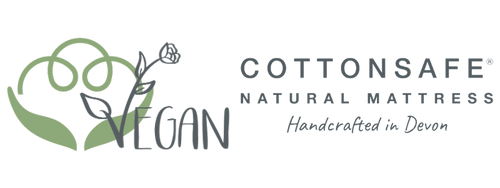All Natural or Organic Latex and Memory Foam used in furniture is highly flammable. That is why the UK Furniture Fire Regulations clearly states that any Latex, which is classed as a foam, MUST be treated with fire retardant chemicals or contain graphite (making it grey in colour) to meet the safety standards.
It cannot be simply wrapped in wool to meet the UK Regulations as the Latex or Foam HAS TO be tested on its own before becoming part of a mattress.
"The Latex itself must pass Schedule 1 Part 3 (crib 5). The test cover fabric is designed to just melt away, i.e. the Latex has to resist the ignition source directly." Furniture Fire Regulations Consultant, Terry Edge. http://www.toxicsofa.com/
Many companies are now claiming to offer Natural and Organic Latex Mattresses which they say are natural, without any flame retardant chemicals. This would be illegal in the UK but what makes it problematic for consumers is that manufacturers and retailers DO NOT have to tell you they are using chemicals, as it is classed as a "safety issue".
The short video below shows you what happens when a flame simply touches the untreated Organic Latex. You can see how the sticky Latex drips and would spread the fire quickly. This test is nothing like as powerful as the tests required by the Furniture Fire Regulations which demand a much higher temperature flame.
So, either your Natural or Organic Latex mattress does not meet the UK Fire Safety Regulations or it does contain fire retardant chemicals (up to 5 kilos in a double mattress) or it contains graphite (which is a natural mineral giving fire retardancy) without additional chemical use. That's fact.

When used in a mattress, Latex works well as a natural foam and rebounds well in use. Like all foams however, it is a good insulator and does make for a warmer than usual sleeping surface. Regarding breathability, this depends on the quality of the Latex. Latex is not the best of materials when it comes to airflow. Natural or man-made fibre will always circulate air better than a Latex or Foam.
If you are buying a mattress that contains other fibres including Latex, then find out how much adhesive has been used in the mattress. Manufactures often use spray adhesives to stop fillings from moving inside the mattress. These adhesives this can lead to off- gassing of chemicals like Formaldehyde, which is why we use no adhesives but hand-sew with flax. In addition, these adhesives can be animal product based.
Foam and Latex mattresses are very easy and cheap to manufacture and therefore can attract companies who try and circumvent the laws and regulations - so it's important to find out what is really contained within the mattress.
At Cottonsafe®, with the support of members of Trading Standards, The Environmental Audit Committee and the Fire Brigade, we are calling for labelling on all mattresses to list the chemical additives used to allow consumers to make an informed choice.

